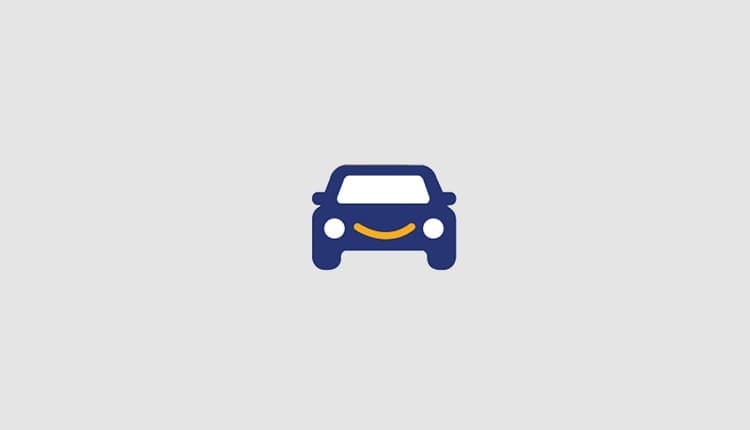
How Do Insurance Companies Value Cars?
Which factors go into determining actual cash value?
Get quotes from providers in your area


The “value” of your car is the amount of money that your auto insurance company agrees to pay if it’s totaled in a covered incident. Insurers assign a value to your car that is typically described as its “actual cash value,” or ACV.
What Is ACV?
ACV — or actual cash value — is the amount of money your car is currently worth. Due to depreciation, your car’s ACV will almost always be less than what you paid.
ACV is important because it determines how much your insurance provider will pay you in the event that your insurer declares your car a total loss. If the cost of repairs is higher than your car’s ACV — or a certain percentage of the ACV — the car is declared a total loss. Assuming the car was totaled under a covered claim, you’ll get reimbursed for its ACV, minus your deductible.
NOTE
Your state or your insurance company decides what percentage of your vehicle’s ACV the damage must exceed for your car to be considered totaled after an accident.
How do I find the ACV of my car?
To find the actual cash value (ACV) of your car, start by checking its market value using trusted tools like Kelley Blue Book, Edmunds, or NADA Guides 1. These tools estimate how much your car is worth based on its make, model, year, mileage, condition, and location. Insurance companies also consider factors like accident history and optional features. For the most accurate ACV, gather recent sales data of similar vehicles in your area and review your insurer’s valuation report if you’ve filed a claim.
How do insurance companies value cars?
Insurance companies determine a car’s value by considering factors such as:
- Mileage
- Year
- Make
- Model
- Optional equipment
- Wear and tear
- Accident history
The companies either use their own proprietary software or third-party software to calculate the ACV based on the above factors.
Which Factors Reduce ACV?
Your car’s ACV will be lower if your car has been damaged in an accident previously, has high mileage, or has abnormal wear and tear. Learn more about the cost of car insurance after accidents.
What is stated value car insurance?
Stated value car insurance gives the car owner the right to declare the car’s worth to their insurer. This value is then used to set a maximum payout limit for that car if it is totaled. It also determines the driver’s premiums. Stated value car insurance is most often used for classic cars, and you’ll need to provide documentation proving value. However, the insurance company still has discretion in the case of a total loss, and may still choose to pay the ACV if it is less than the stated value.
Agreed Value vs. Stated Value
- Agreed value: Agreed value is often used when insuring classic cars. The insurance company and the policyholder agree on the value of the vehicle when they write the policy. That means that in the event of a total loss, the policyholder will be paid the agreed value regardless of how much the car has depreciated.
- Stated value: Stated value is also used with classic car insurance. The policyholder obtains documentation that lists the stated value of the car to the insurance company, instead of the other way around.2 That being said, the policyholder may not receive the full stated amount if the car is damaged or stolen.
How to Negotiate ACV
If you feel your insurance payout is too low, you can negotiate the ACV with your insurer. Since many factors determine ACV, you can negotiate it with your appraiser by using a few tactics:
- Make sure your appraiser has correctly included all your vehicle’s options as well as any aftermarket accessories you’ve installed, as these may increase your car’s value.
- Research recent local sales of the exact year, make, and model of your vehicle, and discuss them with your appraiser.
- If you still can’t agree on an ACV, hire a private appraiser to provide an ACV.
Use the information you found via KBB or NADA when speaking with your appraiser(s).3
FYI
Hiring a private appraiser can cost $200 to $300, which you’ll have to pay out of pocket.
Total Loss
Your car’s ACV is a major component when your insurance company is deciding whether to declare your car a total loss, but let’s make sure we know what that term really means.
Definition
A car is a total loss or totaled under any of these conditions:
- Your vehicle can’t be repaired safely.
- Repairing your vehicle will cost more than its estimated value.
- The damage to your vehicle meets your particular state’s total loss guidelines, detailed below. 4
| State | Car total loss threshold | |
|---|---|---|
| Alabama | 75% | |
| Alaska | Total loss formula | |
| Arizona | Total loss formula | |
| Arkansas | 70% | |
| California | Total loss formula | |
| Colorado | 100% | |
| Connecticut | Total loss formula | |
| Delaware | Total loss formula | |
| Florida | 80% | |
| Georgia | Total loss formula | |
| Hawaii | Total loss formula | |
| Idaho | Total loss formula | |
| Illinois | Total loss formula | |
| Indiana | 70% | |
| Iowa | 70% | |
| Kansas | 75% | |
| Kentucky | 75% | |
| Louisiana | 75% | |
| Maine | Total loss formula | |
| Maryland | 75% | |
| Massachusetts | Total loss formula | |
| Michigan | 75% | |
| Minnesota | 70% | |
| Mississippi | Total loss formula | |
| Missouri | 80% | |
| Montana | Montana | Total loss formula |
| Nebraska | 75% | |
| Nevada | 65% | |
| New Hampshire | 75% | |
| New Jersey | Total loss formula | |
| New Mexico | Total loss formula | |
| New York | 75% | |
| North Carolina | 75% | |
| North Dakota | 75% | |
| Ohio | Total loss formula | |
| Oklahoma | 60% | |
| Oregon | 80% | |
| Pennsylvania | Total loss formula | |
| Rhode Island | 75% | |
| South Carolina | 75% | |
| South Dakota | Total loss formula | |
| Tennessee | 75% | |
| Texas | 100% | |
| Utah | Total loss formula | |
| Vermont | Total loss formula | |
| Virginia | 75% | |
| Washington | Total loss formula | |
| West Virginia | 75% | |
| Wisconsin | 70% | |
| Wyoming | 75% |
How Is Total Loss Determined?
Three factors determine total loss:
- Total loss threshold
- ACV
- Guaranteed asset protection insurance, or gap insurance
Insurance companies compare the ACV to the total loss threshold to determine if a vehicle is a total loss or if it’s worth the cost to repair. In many cases, the replacement cost will be less than the repair cost, so car replacement may be a better option.
>> Related: How Much Is a Wrecked Car Worth?
What If My Total Loss Payoff Is Less Than What I Owe on My Loan?
If you still have a car loan on your totaled car, you may receive a total loss payoff that’s less than the balance of your loan. Do you still have to pay off of your loan?
Unfortunately, yes, you’ll need to repay the rest of your loan even if the total loss payoff doesn’t cover it. That’s the exact reason why people get gap insurance, which covers the difference between the payoff you receive from the insurance company and the amount you owe on your loan.6 Gap insurance often includes collision and comprehensive insurance.
What to Do When You Still Owe Money on a Totaled Car
If you still owe money on a totaled car, you may need to look into auto loan refinancing if you can’t afford your monthly payments. Otherwise, if the accident was the other driver’s fault, you can look into hiring a lawyer.
Recap
Your insurer determines your car’s value through a number of factors, such as make, model, year, mileage, condition, accident history, and recent market data. Most insurers rely on actual cash value (ACV), which reflects your vehicle’s depreciated worth at the time of a claim—not what you paid for it. While your car’s ACV is somewhat subjective, and can be negotiable, there are ways to produce a realistic number, like using an online ACV calculator.
If you’re shopping for an insurance policy, check out our auto insurance buying guide to learn how to choose the right coverage and get the best value.
Citations
Consumer Vehicle Values. National Automobile Dealers Association. (2025).
https://www.nada.org/nada/consumer-vehicle-valuesAgreed Value vs. Stated Amount. American Family Insurance. (2024, Feb 28).
https://www.amfam.com/resources/articles/on-the-road/agreed-value-vs-stated-amountActual Cash Value: How It Works for Car Insurance. Kelley Blue Book. (2025, Feb 07).
https://www.kbb.com/car-advice/actual-cash-value/GEICO’s Total Loss Process. GEICO. (2025).
https://www.geico.com/claims/claimsprocess/total-loss-process/AUTOMOBILE TOTAL LOSS THRESHOLDS IN ALL 50 STATES. Matthisen, Wickert & Lehrer, Attorneys at Law. (2021, Dec 15).
https://www.mwl-law.com/wp-content/uploads/2018/02/AUTOMOBILE-TOTAL-LOSS-THRESHOLDS-CHART.pdfMy Car Was Totaled But I Still Owe Money on It. NOLO. (2025, Jun 09).
https://www.nolo.com/legal-encyclopedia/my-car-was-totaled-but-i-still-owe-money-it.html

